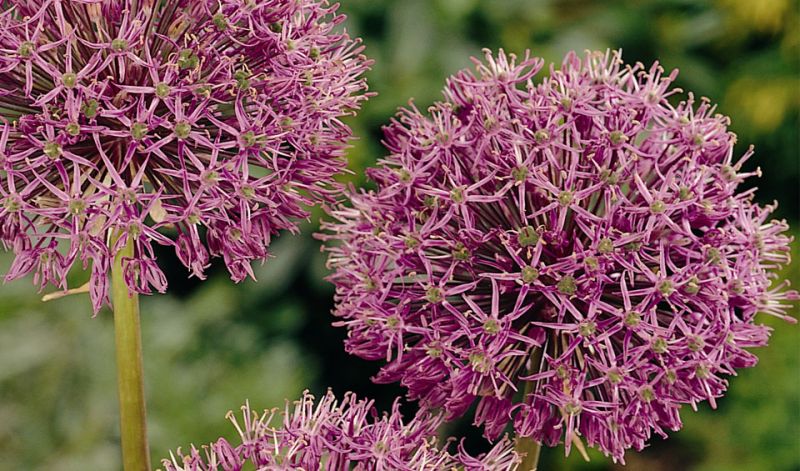Allium stipitatum
("Ornamental garlic / Persian shallot")

Sometimes called 'Drumstick alliums' because the flowers seem a bit small (3-5" / 8-12 cm) compared to the length of the stems but that makes them great to combine with many perennials. This is also advised because the foliage will die back before the blooms appear.
What You Need To Know Before You Plant:
When Will This Flower Bloom?
Late Spring - Early Summer
When Should I Buy and Plant These Bulbs?
Fall
What Kind of Light Does This Bulb Prefer?
Full sun to partial shade
What Color Will the Flower Be?
Lilac-purple
How Far Apart Should I Plant These Bulbs?
8 in / 20 cm
How Deep Should I Dig?
8 in / 20 cm
How Tall Will It Grow?
36-48 in / 90-120 cm
Recommended Number of Bulbs Per Square Foot?
1
Is It Deer/Critter Resistant?
Yes
How Can I Best Use It in My Landscaping?
In borders, perennial gardens and as fresh cut- and dried flowers.
What Should I Do After Flowering?
It is normal that the foliage already starts to turn yellow/brown before the flowers have finished blooming. Let them die back naturally (to build up energy reserves within the bulb) and only remove the dead foliage once it has completely separated from the bulbs. You can either deadhead the finished blooms or allow them to dry and let the seeds be blown to other parts of your garden. Eventually they too will produce new alliums. Even the dried flowers are still quite decorative for a while and after 4-6 weeks you can easily pull them loose (don't force it) and bring them indoors as a dried bouquet. Leave the bulbs in the ground and fertilize them with bonemeal, bulb booster or 10-10-20 early every Spring when the foliage begins to emerge again. Divide and replant them early Fall after they become overcrowded (and flowering diminishes) after 8-10 years.
Other Popular Varieties
(Besides the species itself); 'Mount Everest' (ivory white) and 'White Giant' (white).
About the Family
Allium Family
Many hundreds of Allium species exist, but only a modest few have made a name for themselves as garden plants. The genus, Allium also includes important plants used for human consumption such as onions, leeks, shallots and the familiar cooking herb, chives.
Read More About the Family


